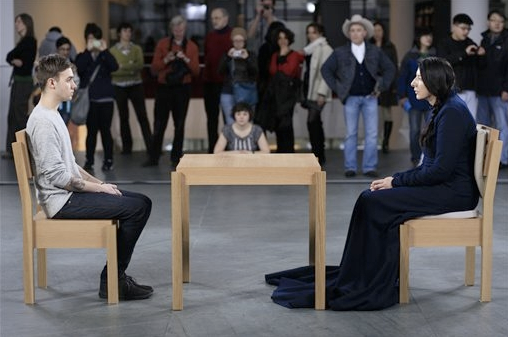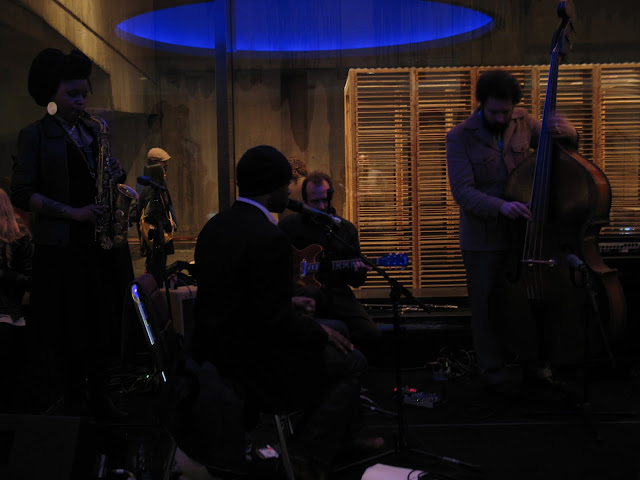THE COMBINATION OF LIMITS
Andrea Meislin Gallery
March 22 to May 3, 2008
 Sans Personne á Qui Parier, 2008
Sans Personne á Qui Parier, 2008
The exhibition will feature an assembly of photographs, accompanied by a 'found' video, commenting on boundaries and borders in the Israeli spatial, temporal and conceptual continuum. Works divide roughly into the geographic polarities of Tel Aviv, Jerusalem and the new city of Modiin, an amorphous sprawl in the foothills midway between Jerusalem and Tel Aviv.
Ritual eruv demarcations become the recurring element of the Modiin pictures. Nearly invisible itself, the eruv twine makes visible other 'invisibilities' in the landscape. In the triptych
Sans Personne à Qui Parler, the eruv activates the tell tale foliage evidencing the one-time Palestinian village, El Burge.
Axes, situated several hundred yards to the east, catches the old north/south road that skirted the green line before it too fades into the landscape. As the road disappears on the horizon, infrastructures such as pylons and newly strung power lines, as well as the eruv, create a new dominating east/west axis. In the untitled black and white photograph from the western edge of Modiin, the eruv frames a terrain dotted with saplings planted by the Jewish National Fund, another form of demarcation – memory forests.
Two pictures from Bauer's Domino/Backgammon series depict the unfinished villa constructed by King Hussein of Jordan on the northern outskirts of Jerusalem. The first image, a manipulated one, is suspended in a whimsical state between high modernism – structurally mimicking Le Corbusier's
Maison Domino – and the inevitable hybrid orientalist pastiche that would have been the ornamental end result had the villa been completed. The second image shows the view from the veranda of the villa, interwoven neighborhoods of greater Jerusalem settlements and Arab villages. With the detailed ceiling framing the scene in the foreground we are caught between utopian fantasia and 'facts on the ground.'
Bauer further investigates architectural specters in
Gains/Losses. Large exaggerated panoramas of a mega-structure in the heart of Tel Aviv, Israel's first indoor shopping mall, are juxtaposed with a film loop of found footage showing the construction of the Bar Lev Line (Israel's Maginot Line-like fortifications on the Suez Canal that were overrun in the 1973 Yom Kippur War.) Both military line and civilian bunker (shopping mall) were built by the same contractors one after the other in the early seventies. Made of sand and cast concrete, they were resolute attempts to attain stability, to dig in, and to give assurance.
Composed View #2, situated just beyond greater Jerusalem in the Etzion settlement block, is a composed 'cropped' panorama. Here all 'framing' details are removed leaving only the juxtaposition of the Arab village with the Israeli settlement. The 'organic' Arab village blend into the hills, while the settlement rides the crest of the wavelike form of these same hills. The image masks the crime in the sublime. (Press release)
 Domino and Backgammon, 2006
Domino and Backgammon, 2006
Daniel Bauer has shown in numerous international exhibitions including Gains/Losses, Art Focus, International Biennial of Contemporary Art, Jerusalem (1999), Borderline Disorder, the Israeli Pavilion at the Venice Biennale of Architecture (2002), Territories: Islands, Camps and Other States of Utopia, Kunst Werke, Berlin (2003), Metamorphosis, The Israel Museum, Jerusalem (2003), Utopia and Other Facts on the Ground, Malmo Konsthaal (2004). He is a recent recipient of an MFA from Columbia University and currently teaches at the Bezalel Academy of Art and Design in Jerusalem. This will be his first solo show in New York.
 Fengdu II, 2002
Fengdu II, 2002
























